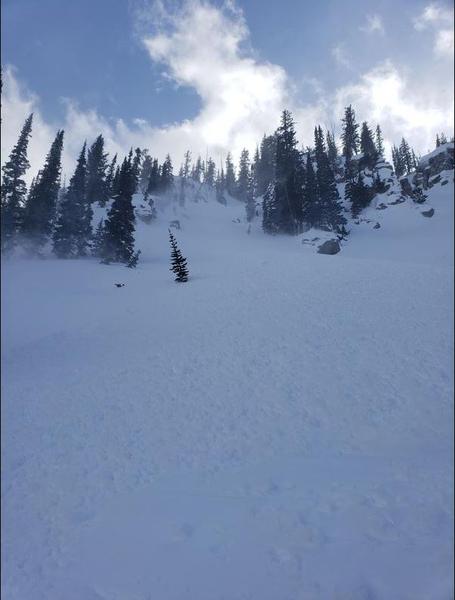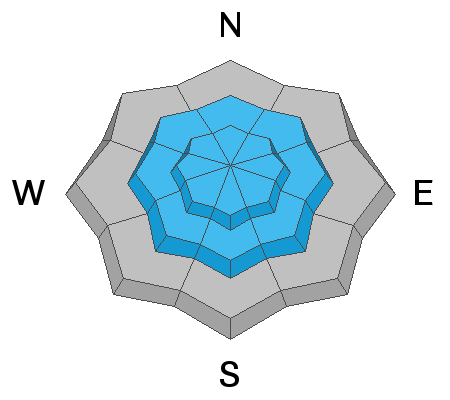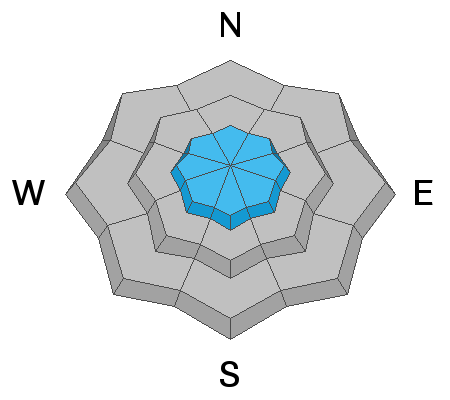We know there is a lot of uncertainty regarding the Coronavirus, but the Utah Avalanche Center is planning to continue issuing regular avalanche forecasts into April.
Alta Ski Area, Park City Mountain Resort and the Canyons are closed to uphill travel - check your specific ski resort for uphill travel policies during the upcoming closures. This morning mountain temperatures are in the low 30s F at trailheads and low 20s F at ridgelines. Winds are currently south southwesterly and cranking, averaging 20-40 mph, with gusts up to 60 mph at mid-elevation ridgelines. At 11,000 winds are averaging 30-40 mph, with gusts near 80 mph.
In the last 24 hours, most parts of the Central Wasatch got 1-4 inches of new snow (.02-.44" SWE). Upper Big Cottonwood Canyon was favored in the storm and the Brighton area got up to 7 inches of snow (.97" SWE).
Today occasional light snow showers will continue into the evening, bringing another 1-2 inches of snow to the region. Temperatures will be the mid-40s F at trailheads and mid-30s F at ridgelines. Winds will continue to crank from the southwest, averaging 20-30 mph with gusts up to 50 mph at mid-elevations and gusts up to 85 mph at upper elevations.
Our Week in Review - where we summarize snow, weather, and avalanche activity over the past week, is available
HERE.
Yesterday multiple shallow soft slab avalanches were reported in the backcountry. In
Upper Mary Chutes, one skier triggered a shallow soft slab of wind drifted snow on a North aspect at 9800' that broke 50' wide.
Below is a photo of the shallow slab of wind drifted snow from Upper Mary Chutes. (Photo: slp)

Ski areas reported sensitive slabs of wind drifted snow on leeward slopes.











